Two minute review
With the arrival of the Google Pixelbook Go, the price of entry to the Google product line has become more accessible to consumers. Due to Google Pixelbook’s premium price, it’s way over most people’s budget. That makes this new arrival a welcome and certainly appreciate the addition to the roster.
Of course, to keep the price relatively low – this still isn’t the cheapest Chromebook on the market, certain sacrifices need to be made. More premium features like a biometric login are missing, for example. And, while the base configuration is affordable, the higher ones are more expensive, which gives you less value for your money.
Still, Google Pixelbook Go comes with a few features you won’t find in Apple’s best offerings – the 1080p webcam, impressive battery life, and impressive keyboard are certainly enough to convince those looking to move on from the iPad OS ecosystem. And, it’s still the proposition available if you want to get into the Google product line without burning a hole in your pocket. Even if those with the dough will still find the flagship Pixelbook to be their go-to option, for most of us, the Go is the ideal choice.
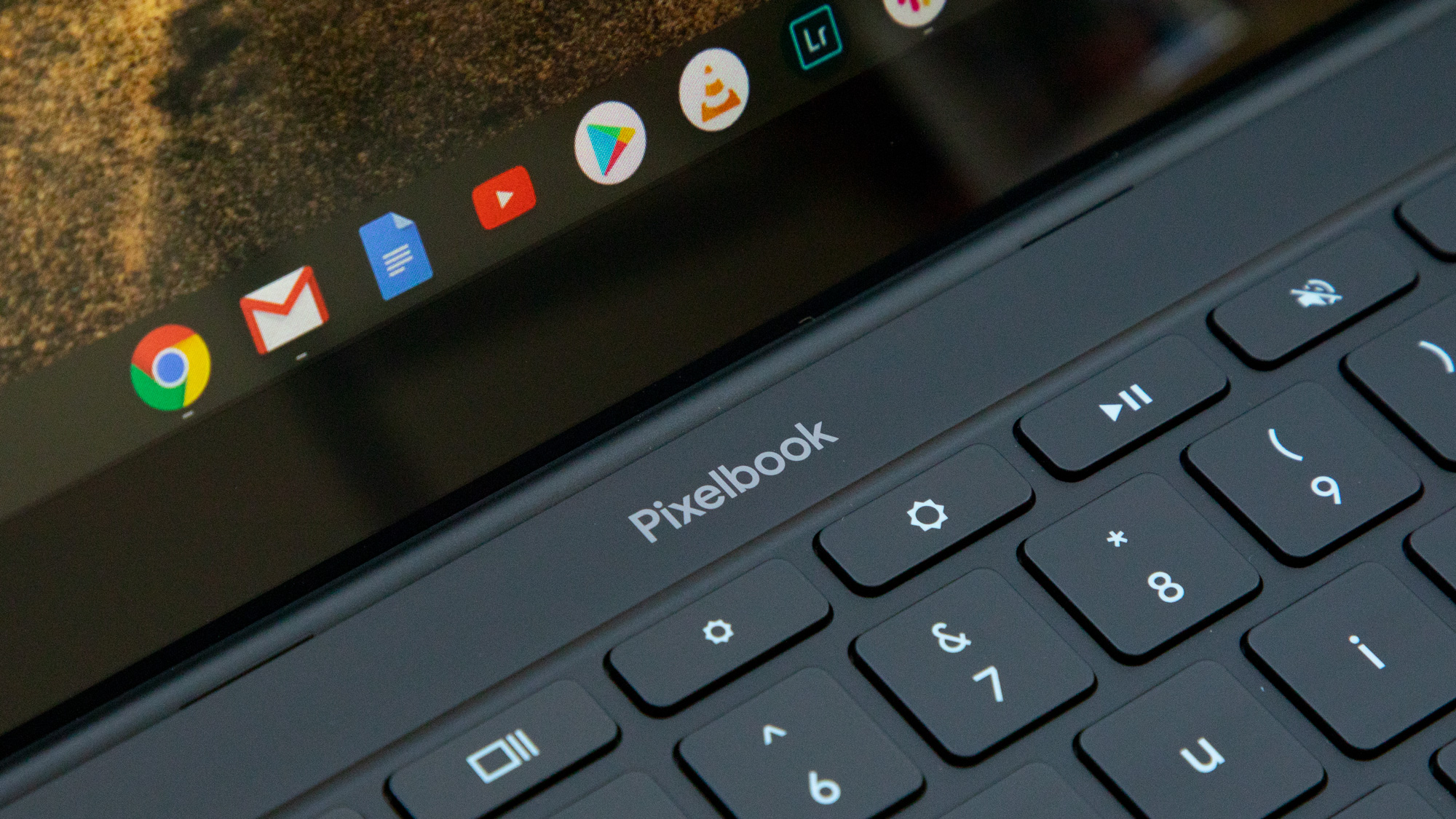
Spec sheet
Here is the Google Pixelbook Go configuration sent to TechRadar for review:
CPU: 1.3GHz Intel Core i5-8220Y (dual-core; 4MB cache; boost up to 3.9GHz)
Graphics: Intel UHD Graphics 615 (300MHz)
RAM: 8GB LPDDR3
Screen: 13.3-inch Full HD (1,920 x 1,080; 166 ppi) LCD touchscreen (16:9; 72% NTSC)
Storage: 128GB eMMC
Ports: 2 x USB-C 3.1 (charging and display out), 3.5mm headphone jack
Connectivity: Wi-Fi 5 (802.11ac, 2x2 MIMO, dual-band); Bluetooth 4.2
Cameras: 1080p Duo Cam (2MP, 60 fps)
Weight: 2.3 pounds (1,061g)
Size: 12.2 x 8.1 x 0.5 inches (311 x 206.3 13.4mm; W x D x H)
Price and availability
Admittedly, Google is still demanding quite a bit with its cheaper flagship Chromebook at the onset: $649 (£629, about AU$950) for 8GB of memory (RAM) and 64GB of storage with an 8th-generation Intel Core m3 processor (CPU) and Full HD (1080p) LCD touchscreen. Here’s how the rest of the pricing breaks down:
- Intel Core i5 (8GB, 128GB) – $849/£829/about AU$1,250
- Intel Core i5 (16GB, 128GB) – $999/£949/about AU$1,470
- Intel Core i7 (16GB, 256GB, 4K) – $1,399/£1,329/about AU$2,050
As you can see, while the Google Pixelbook Go is meant to be an alternative to the Google Pixelbook proper, which will still be available, the Go can get close to that higher-end laptop’s price very quickly if you’re not careful. This, eventually, kind of defeats the point of the product’s positioning altogether.
If you’re going to drop $999 on a Pixelbook Go, you might as well buy the Pixelbook proper, with its sharper display, hybrid features and stylus support. That said, you are getting some features in the Go that just doesn’t come in the Pixelbook, like a 1080p webcam and up to two more hours of battery life.
Still, it should be noted that for just $50 more than the mid-range Pixelbook Go – when it’s on sale in the US – you can purchase a 2019 MacBook Air with twice as much storage, a sharper display, better Thunderbolt 3 ports, not to mention the overall allure of a full macOS system.
At the entry-level, there are some similar Chromebooks that beat the Google Pixelbook Go on price, such as the 14-inch Asus Chromebook Flip, which offers a full 2-in-1 experience for $50 less in the US. Likewise, you’ll find a practically identical situation with Samsung’s Chromebook Plus V2 at $599 in the US.
Regardless, when it comes to premium Chromebooks, the Pixelbook Go is mostly unmatched in its particular benefits and features it offers, such as super long battery life, a 1080p webcam and one of the best keyboards we’ve ever had the pleasure of using on a laptop.


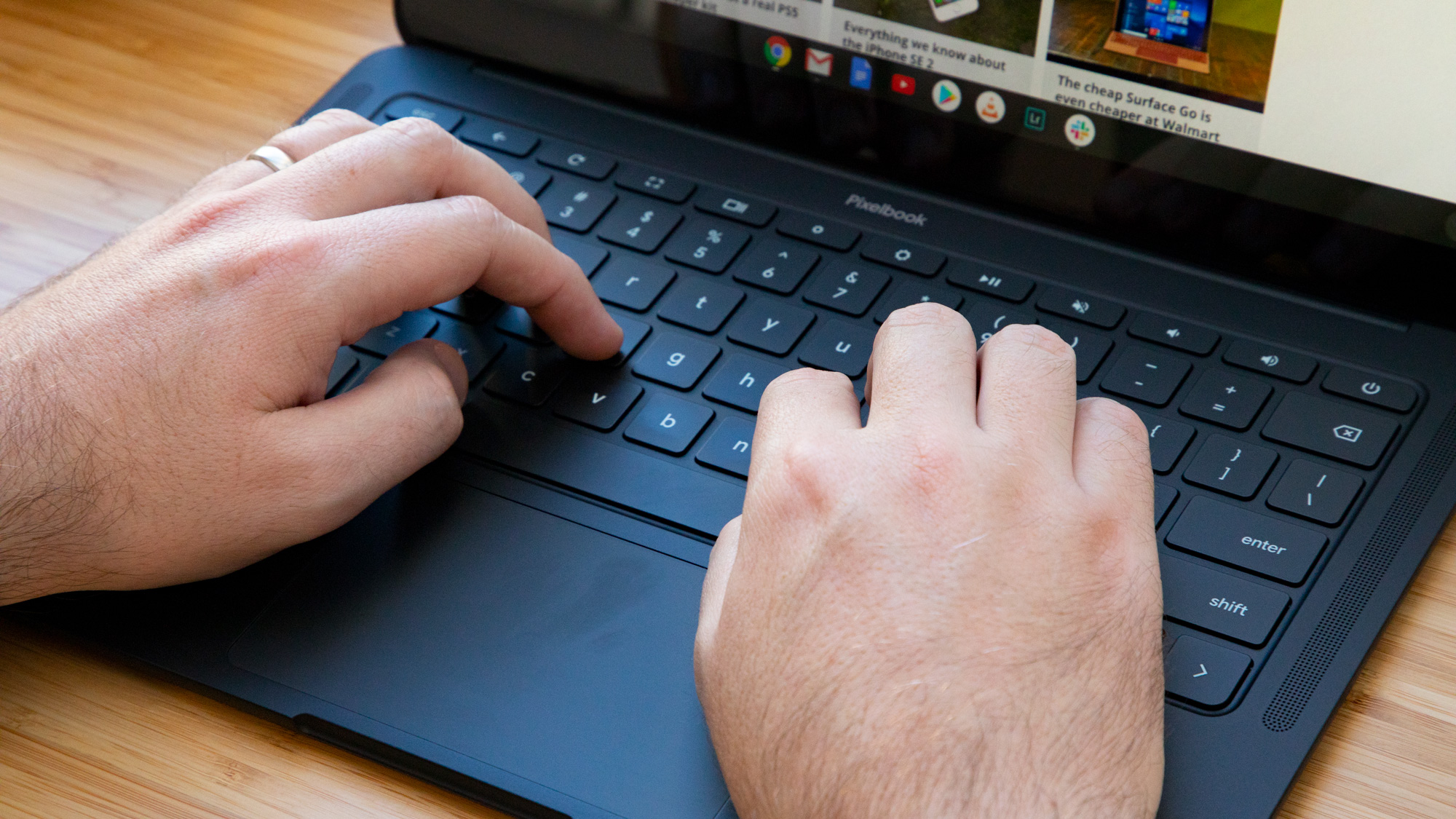





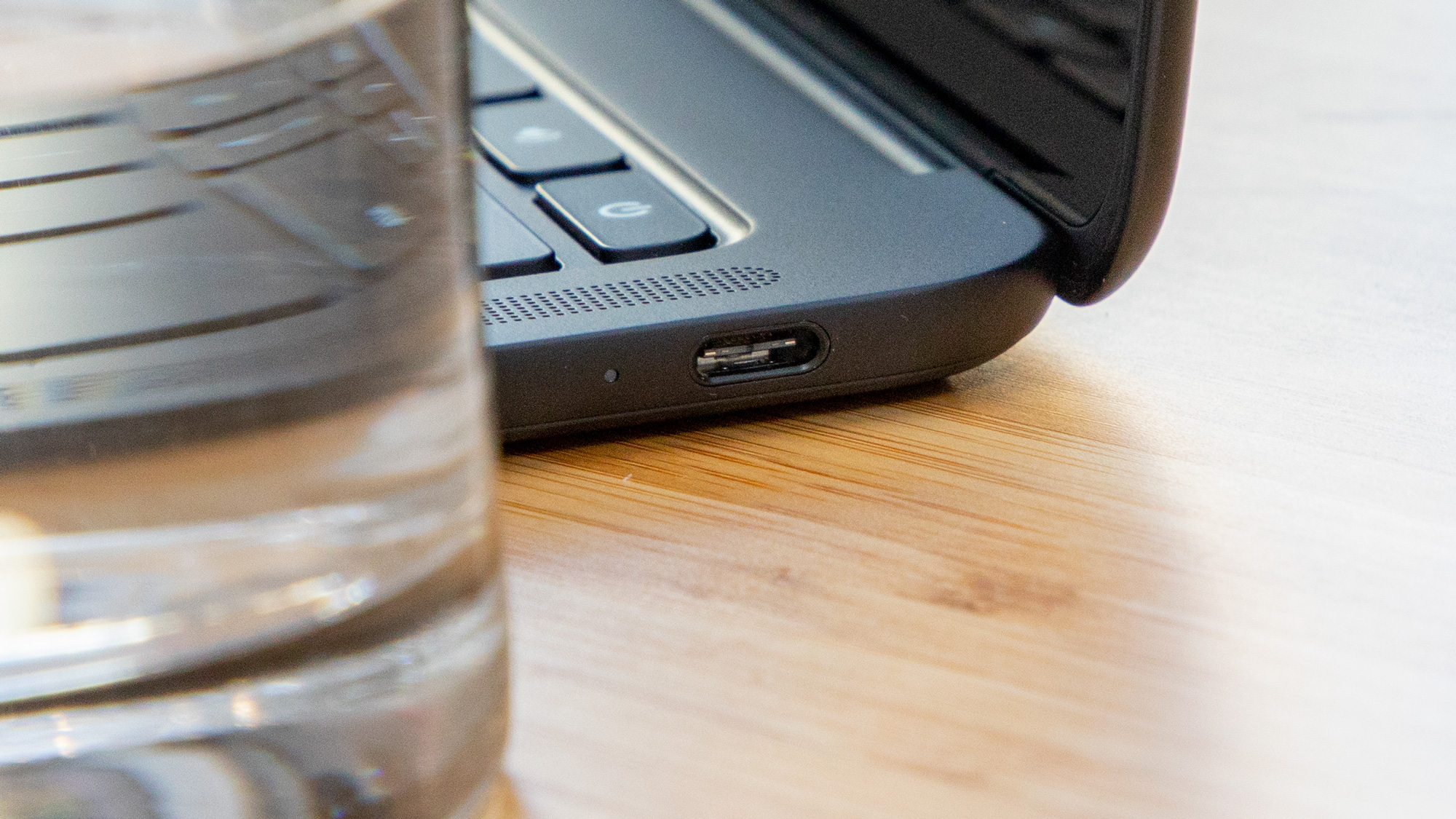

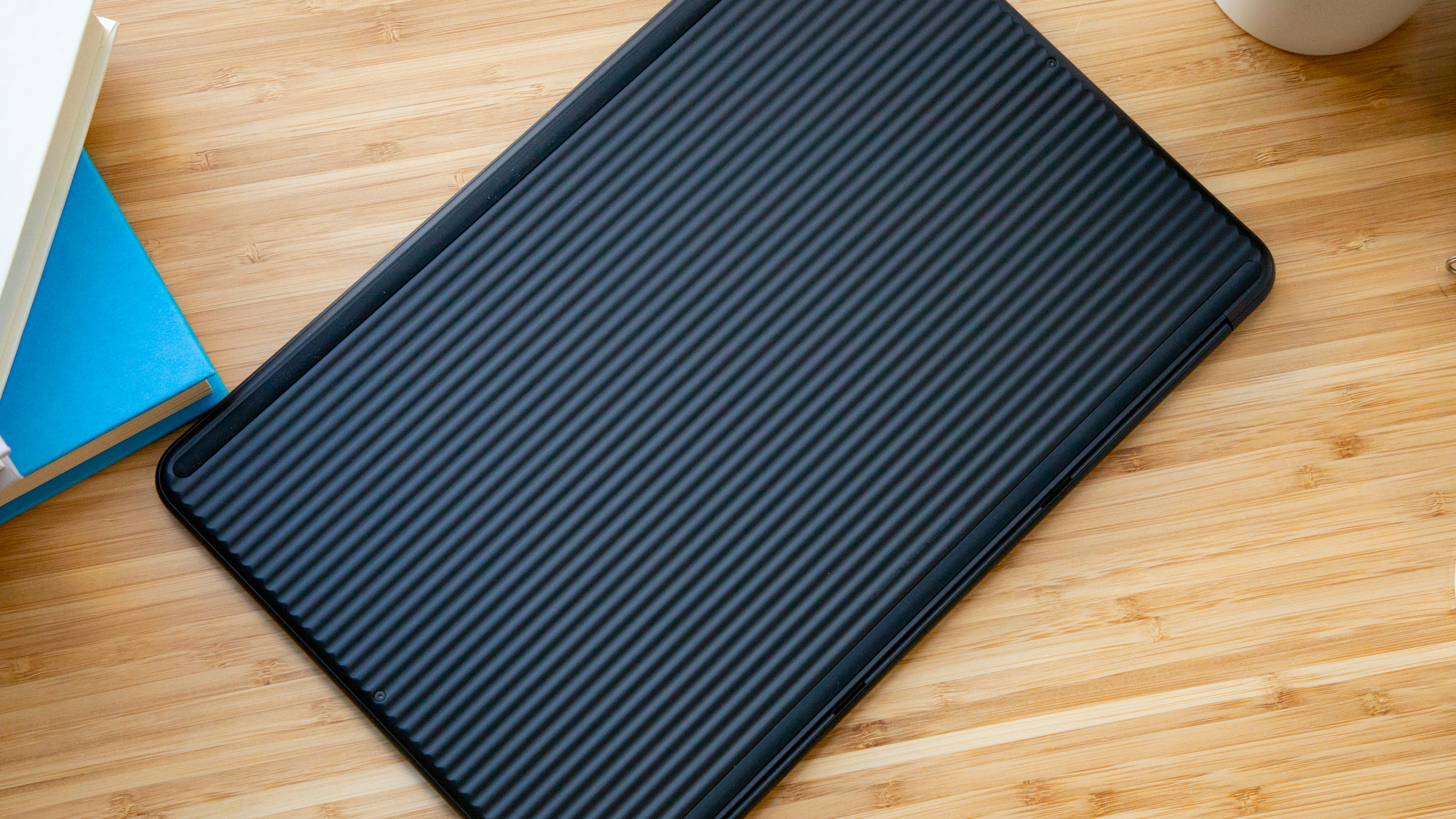
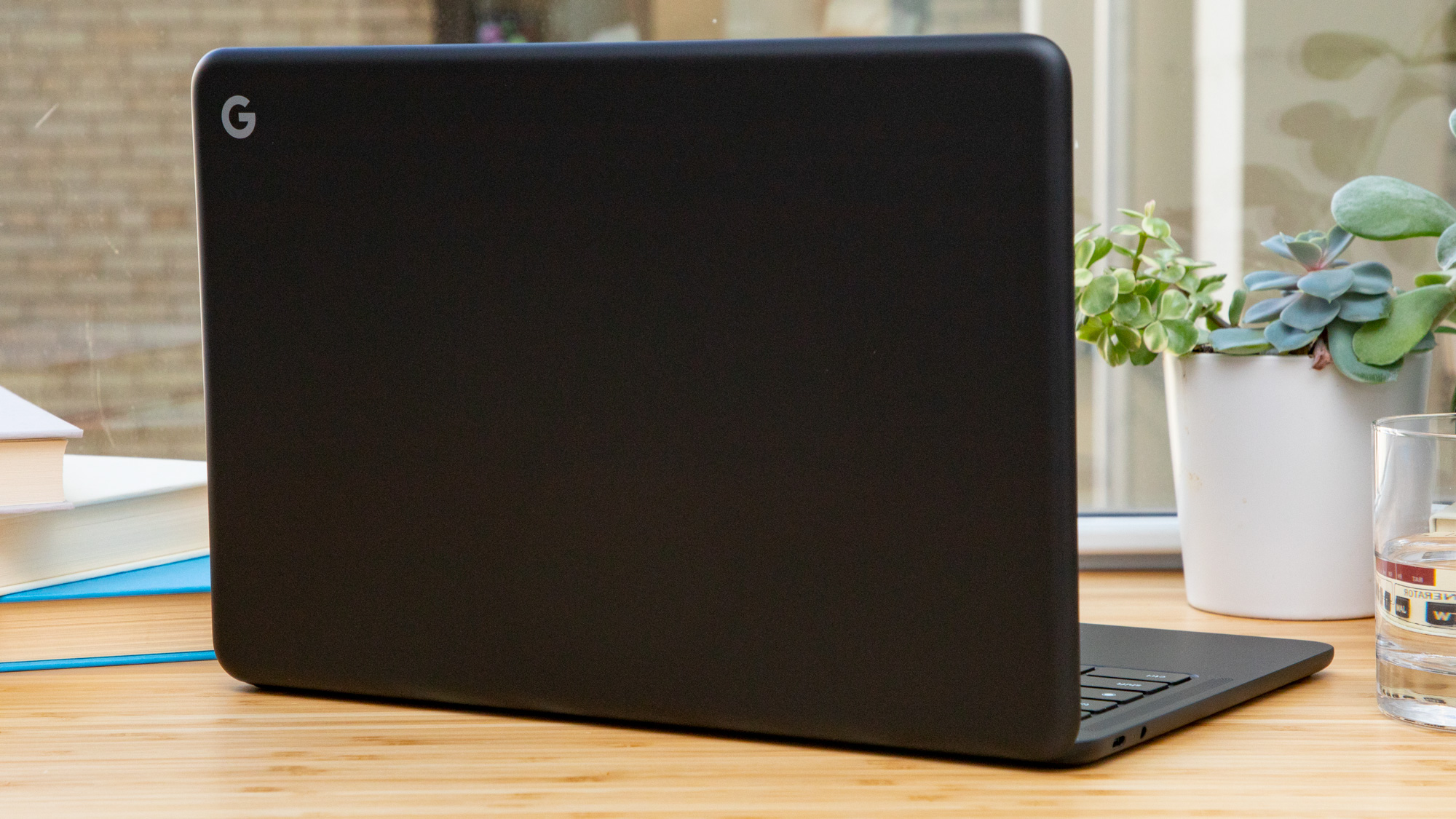
Design
Of course, the Google Pixelbook Go is designed to be thin and light, measuring just 0.5 inches thick and weighing 2.3 pounds. The laptop comes in just two colors: "Just Black" and "Not Pink” – otherwise known as black and pink. We would appreciate something in between these two, such as a white or straight anodized magnesium option, but alas.
As we mentioned, this laptop’s frame is made from a magnesium alloy painted in a matte texture that, paired with the rippled base, is veritably easier to grip and hold while moving between meetings or work spaces, as Google promises. We find this frame to be very resistant to pressure and flex, which is rare in Chromebooks. And, boy, does Google make use of every last inch of that frame.
The Pixelbook Go not only sports a keyboard with comfortably spaced keys, but also top-firing speakers. Sure, they’re a bit small and, as a result, somewhat tinny in the high-end, but these speakers beat the vast majority of laptops of this size, normally found with bottom-firing speakers.
However, one thing that Google didn’t include is biometric log-in capability: there is no fingerprint sensor nor is there an iris or face scanner on the Pixelbook Go. Considering that many Chromebooks provide at least one of these solutions at this price point, it’s a sore spot for sure. Google tells us that it’s relying on its Android phone unlocking feature, but that leaves out anyone not using an Android phone.
But, back to positives, the Google Pixelbook Go keyboard is, without a doubt, one of the best we’ve ever used on a laptop. This is an improvement of Google’s "Hush" design, which brings the company's original, silent Pixelbook keys to this more reasonable price point. We’d say that this is the best combination of silence and forceful feedback that we’ve ever experienced on a laptop keyboard.
However, you most likely wouldn’t know that the Pixelbook Go keyboard is backlit without reading this review. Pro tip: holding the “Alt” key and then pressing the screen brightness controls toggles the level of keyboard backlight brightness. It’s not a deal breaker, but this design is not that intuitive, to say the least, as this combination doesn’t do anything for any other key on the top function row.
When it comes to connectivity, the Pixelbook Go is equipped with two USB-C 3.1 ports that can handle both charging and display output, in addition to a 3.5mm headphone jack. This is by no means an expansive port selection, but it doesn’t really have to be. With that said, the laptop’s mid-range and high-end configurations are easily outmatched by Thunderbolt 3 ports aplenty when looking at their price-equivalent competition.
There is one disadvantage when comparing the Pixelbook Go frame design to its predecessor and competitors at similar prices: it’s not a 2-in-1 laptop. This certainly impacts the laptop’s versatility, but personally, this editor doesn’t care for convertible 2-in-1 laptops anyway. That makes us wonder why Google would include a touchscreen at all, but that would severely limit the amount of Android apps the operating system (OS) could support.
Now, let’s discuss what you’ll spend your entire time staring at: the display. Short of the highest-end configuration, the Pixelbook Go utilizes a 1080p touchscreen, which we find to display colors with the vibrancy and accuracy we expect from laptops within the high-end price range. However, we do wish that Chrome OS could render at native resolution without scaling – the most legible scaling produces an effective 1,600 x 900 resolution, cheapening the impact of its 1080p standing somewhat.
Still, we’d feel much more confident editing photos on this laptop screen than most other Chromebooks. As for the 4K Molecular Display option, while we haven’t experienced it in person, we find it to be completely unnecessary for a Chromebook.
Plus, above the screen, the Google Pixelbook Go features a 1080p front-facing camera that records video at 60 frames per second. Not even the 2019 MacBook Pro models come with this sharp of a webcam. Depending upon your connection, you’ll look much better than most other people in your video meetings using this laptop.

Performance
Being a Chromebook, you shouldn’t expect groundbreaking performance from the Pixelbook Go, particularly with fanless Intel CPUs inside. While we can’t speak for the entry-level model’s Intel Core m3 performance, we can say that the Core i5 Y-series is more than enough for basic tasks and even some light photo editing.
Benchmarks
Here’s how the Google Pixelbook Go performed in our suite of benchmark tests:
JetStream 2: 86 (higher is better)
Mozilla Kraken 1.1: 1,263ms (lower is better)
Geekbench 4 (Single-Core): 3,770; (Multi-Core): 6,516
TechRadar Battery test: 11 hours and 14 minutes
The laptop is certainly capable of running Android games and playing back 1080p video just fine, but anything beyond that will likely make the system chug. This works out well for Google, as its OS doesn’t really support many truly demanding applications.
We found that, with 8GB of RAM, this Chromebook is much more able to multi-task between a number of Google Chrome browser tabs – more than a dozen – without having to reload them upon accessing them due to memory shortages. Most Chromebooks at this price offer just 4GB of RAM to their detriment, as Google’s browser is awfully RAM dependent, even after updates.
Also, for its price, the Pixelbook Go's Geekbench 4 numbers aren't that much worse than the latest MacBook Air, at least with the configurations we’ve tested. That’s quite an impressive feat for a Chromebook – and, ironically, quite a feat for the MacBook Air.
In short, any task we need to perform to do our jobs here at TechRadar can be done on this Pixelbook Go without issue. That doesn’t speak for every user out there, but we do have a varied and intense workload spanning several browser tabs and Android apps at any given time.

Battery life
It’s even better that the Google Pixelbook Go has an extremely impressive battery life. It took a massive 11 hours and 14 minutes to run the Chromebook down via our local video playback test. The MacBook Air 2019 missed that mark by … an hour and 14 minutes.
This falls very closely in line with Google’s promised number – 12 hours on a charge – which is rare for almost every laptop on the market. The only other laptops to come that close to their advertised battery life figures are Apple’s, which is a testament to the benefits these companies enjoy from tuning their own hardware and software in tandem.
Plus, the Pixelbook Go can get up two hours of battery charge from just 20 minutes connected to the outlet. This makes the laptop nearly unkillable in terms of battery juice, a huge boon for folks that work from multiple places daily or take their work with them on their commute.

Software and features
One huge benefit of Chromebooks is that they normally all come with squeaky-clean installs of Chrome OS, and naturally the Google Pixelbook Go is the cleanest of them all. However, this also means that this laptop doesn’t really offer anything truly unique in terms of software or features that isn't already offered by other Chromebooks.
We do appreciate the inclusion of Google Assistant via voice or the keyboard, but again, this isn’t unique compared with almost every other modern Chromebook.
If there’s anything distinctive about this Chromebook in terms of features, we’d have to point again to its sharp, 1080p webcam. It’s a rarity on Chromebooks much less some of the most expensive laptops out there.
That said, we think that the Google Pixelbook Go should have some form of biometric login at this price, like most other laptops do – Chromebook or not. It’s not enough to assume users have an Android phone to log into their laptop with, especially in the US where iPhones are absolutely everywhere.
We’re ultimately happy to say that, in 2019, there is very little about Chrome OS that keeps it from parity with Windows 10 and macOS. Sure, it’s not a completely manipulable system like those are, but the vast majority of users can get just as much done here as they can on those traditional operating systems.

Buy it if…
You want an ideal Chromebook experience
From its luxurious build quality to an excellent and complete software experience, you’re getting the best Chromebook available at this price. And, now that Chrome OS is nearly comparable with the established operating systems, you’re no longer missing out on that much as an average user.
You want one of the best laptop keyboards ever
Seriously, the Pixelbook Go has the most impressive combination of silence and feedback that we’ve ever heard or felt in a laptop to date. It’s honestly enough to make this laptop our everyday machine with how comfortable the keyboard is.
You want a laptop with an actually decent webcam
The fact that the Pixelbook Go has a sharper webcam than even the 2019 MacBook Pro models is, well, insane. If you want a laptop with a great webcam that doesn’t cost a fortune, apparently Google’s latest laptop is a way to go – who would’ve thunk it?
Don’t buy it if…
You’re not into Chromebooks
If you simply don’t like what Chromebooks stand for or what they offer, then the Pixelbook Go isn’t likely to change your mind. Sure, it’s probably the absolute best Chromebook to put in front of a nonbeliever, but chances are slim that it will convert them.
You need a powerhouse laptop
While the Pixelbook Go can handle more than most Chromebooks in its class, thanks to a minimum of 8GB of RAM, it’s by no means going to replace, say, a MacBook Pro. That’s not the point of this laptop, so move along if raw computing power is what you seek.
You need a fully open OS
Google has brought Chrome OS leaps and bounds forward in comparison with Windows 10 and macOS, but it’s fundamentally nowhere near as open. You still can’t manipulate files and programs in the same way that those operating systems can, which is understandably important to plenty of people.
via Tech Trade
Comments
Post a Comment